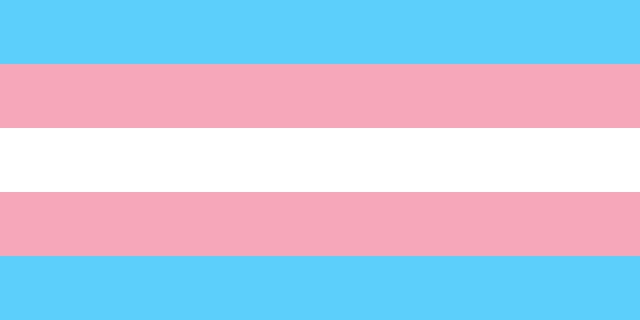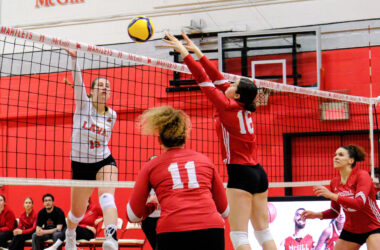On March 25, World Athletics, the governing body that regulates track and field, cross country running, road running, race walking, mountain running, and ultra running competitions at the international level, voted to completely ban transgender women athletes who have gone through male puberty from competing at international events.
The decision follows a wave of “fair competition” policies that were put into place after Lia Thomas, a swimmer for the University of Pennsylvania, became the first-known transgender woman to win a National Collegiate Athletic Association (NCAA) swimming championship. World Athletics joins World Aquatics and World Rugby as one of the several international organizations to ban transgender women athletes based on whether or not they have gone through male puberty, instead of blood testosterone levels.
The World Athletics’ decision reverses the previous policy that required transgender women to keep the amount of testosterone in their blood under the maximum of five nanomoles per litre, and stay under this threshold continuously for 12 months prior to competing in the female category. World Athletics claims that its “preferred option” was to continue to allow transgender women to compete in the female category while implementing more aggressive regulations for testosterone levels. But the proposition allegedly garnered “little support” from stakeholders, such as member federations, athletes, coaches, and the International Olympics Committee (IOC), as well as transgender and human rights groups.
World Athletics also elected to alter their policy for athletes with differences in sex development (DSD), a group of rare conditions involving genes, hormones, and reproductive organs resulting in different sex development trajectories, halving the maximum level of blood testosterone from five to 2.5 nanomoles per litre for women’s competition. Those with polycystic ovary syndrome (PCOS), in whom excess testosterone is common and typically exceeds this new cutoff, may also be barred from competition.
Many organizations that have elected to ban transgender athletes cite a study from the British Journal of Sports Medicine (BJSM) that concludes there is an association between the use of gender-affirming hormones and changes in athletic performance. The BJSM study suggests that more than 12 months of gender-affirming hormone usage is “needed to ensure that transgender women do not have an unfair competitive advantage when participating in elite-level athletic competition.”
However, some experts are critical of the study’s conclusions due to sample size, narrow research questions, and misleading language.
“It feels like our sort of Cirque du Soleil contortionist style stretch to say that that’s enough evidence to sort of make that blanket statement,” Dr. Lindsay Duncan, an associate professor in McGill’s Kinesiology and Physical Education Department, told The Tribune. “They present the best evidence available […] to address a pretty specific research question with sport performance defined in a pretty specific, narrowly conceived way [….] Sport performance involves so many other factors [….] There’s a lot more going into it than that one pretty specific study could address.”
Dr. Charlotte Usselman, an assistant professor in McGill’s Department of Kinesiology and Physical Education, is also concerned with the content of the research paper.
“Given that some people were only assessed once after starting hormone therapy (and most were only assessed twice), we have no idea how many people are included in the ‘2+ year’ time point,” Usselman wrote in an email to The Tribune.
“[T]he authors interpret their findings to directly suggest that ‘governing bodies for sporting competition should require more than [one] year of testosterone suppression prior to competition’,” Usselman continued. “[T]hey did not present enough evidence to support this conclusion.”
The BJSM study, along with the International Federation of Sports Medicine (FIMS)’s 2021 Consensus Statement––a study that concludes serum testosterone concentrations are an objective biomarker to regulate the inclusion of transgender athletes––acknowledge the limitations of their respective research. Many of these limitations stem from the lack of sports performance data from athletes before, during, or after testosterone suppression, in addition to small sample sizes.
World Athletics claims the ban prioritizes “fairness” over inclusion, citing a potential competitive advantage for transgender women athletes competing in women’s categories. These concerns of a competitive disadvantage for cisgender women athletes arise from the BJSM and FIMS studies that conclude transgender women retain physical advantages such as larger wingspan, increased lung capacity, and greater muscle mass, despite reducing their testosterone levels and taking gender affirming hormones. However, with no transgender athletes currently competing at the international level, many question the true prerogatives of the ban.
“Bans on trans athletes are not primarily concerned with actual trans athletes, they are about stoking fear of trans women and presenting us as ‘invading women’s spaces,” a member of the Trans Patient Union (TPU) wrote to The Tribune.
“When trans people and transfeminine people in particular are banned from participating or stigmatized for participating in sports, the harm done is also about making it harder for us to participate in everyday life,” wrote TPU’s external affairs co-coordinator, who wished to stay anonymous. “Like bathroom bills, athletic bans don’t present trans people with a feasible new way to participate, it’s about pushing us out of everyday life altogether.”
The restrictive nature of binary gender categories also excludes both transgender people who do not medically transition and those who don’t fall into the category of male or female.
“If legitimate concerns about fair play do come up, rather than dealing with such concerns by banning a transfeminine and intersex athlete for participating, we should mitigate relevant unfair physical advantages in ways analogous to the weight and age classes already used to ensure fair play,” TPU’s external affairs co-coordinator wrote. “We should regulate relevant physical advantages, not gender identity.”
Beyond the intricate nature of gender, the concept of “fairness” is complicated by the fact that the very structures of sport are fraught with inequities.
“Most of our sports structures are not fair for trans and non binary people, forcing people into gender categories, forcing them into gendered spaces,” Duncan said. “Based on our data, if a trans athlete gets to the highest level of sport, from a character perspective, they’re a superhuman, because they’ve been through a tremendous amount of unfairness before they can even get there.”
Some argue that World Athletics should revert to its former testosterone policy approach, but even the use of testosterone levels as an indicator of competitive advantage is severely understudied.
“In some sports, testosterone levels might be a reasonable predictor of performance and could signal a competitive advantage [but] in other sports that’s not nearly enough,” Duncan explained. “I don’t think that overall testosterone levels is an effective way to measure a competitive advantage. In most sports, we don’t have any data that we could use to actually check that hypothesis.”
Will Huckins, a master’s student in McGill’s Department of Kinesiology, notes that dependence on testosterone runs contradictory to World Athletics’ own research.
“[The World Athletics’] head of health and science conducted research at the 2011 and 2013 World Championships which found that testosterone was only linked with improved performance in five of the 21 events they investigated (400-metre, 400-metre hurdles, 800-metre, hammer throw, and pole vault).”
USPORTS, the governing body of most McGill varsity sports, currently has no restrictions for transgender athletes in competition. As for McGill Intramural sports, the open, mixed, and women’s categories are inclusive of two-spirit, transgender, and gender-nonconforming peoples, and the policy encourages athletes to participate in the category that best aligns with their gender identity. However, as head coach of the artistic swimming team at McGill, Duncan believes that more needs to be done to ensure that athletic spaces are truly accepting of transgender athletes.
“If we’re going to welcome trans athletes onto teams, I think we need to make sure that we’re prepared to offer a psychologically safe space,” Duncan said. “Change really comes from having discussions with other coaches, with other athletes, challenging the assumptions that we have and just raising questions.”








